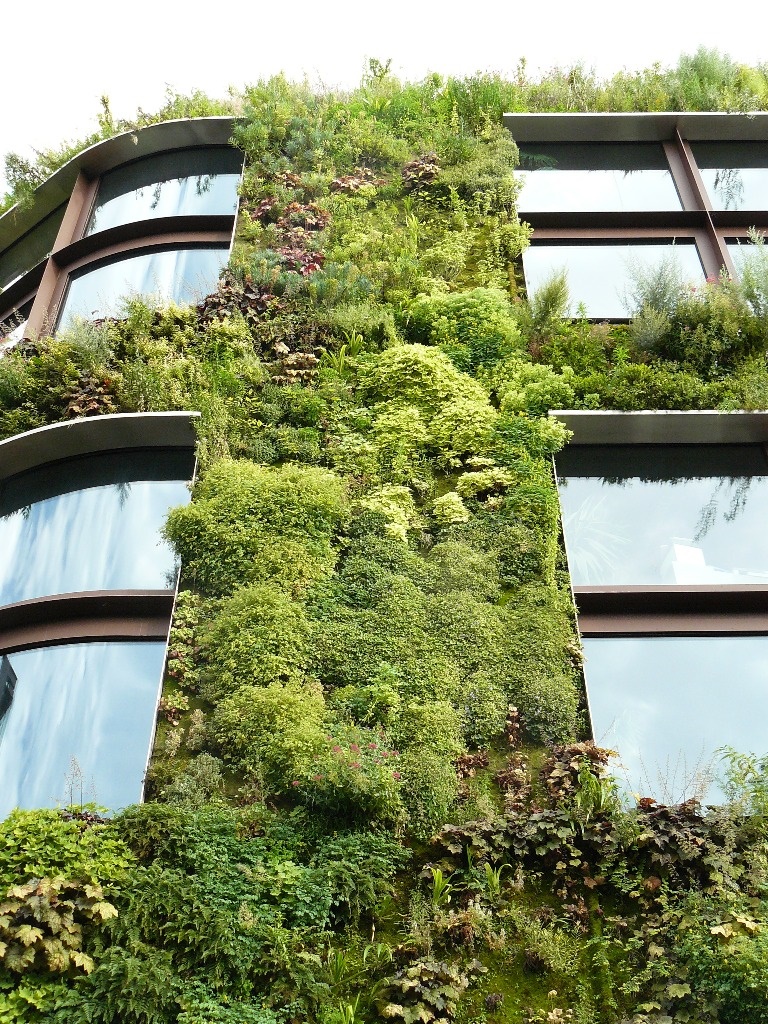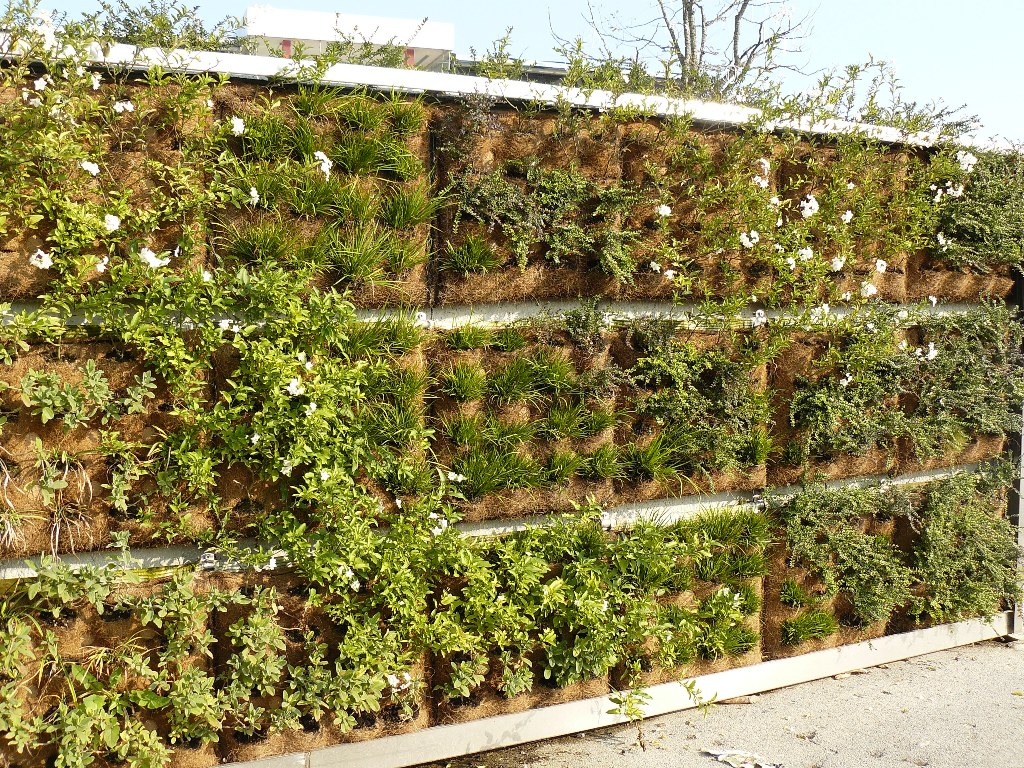Vertical gardens, an effective solution for Mediterranean climates
Researchers from Universidad Politécnica de Madrid and Università degli Studi di Camerino have developed a new methodology to study the energy efficiency of vertical gardens installed on the facades of buildings.
A team of researchers from Universidad Politécnica de Madrid (UPM) and Università degli Studi di Camerino (UNICAM) has carried out a study to establish the link between the thermal insulation thickness of buildings and energy performance of vertical gardens set in their facades after the entry into force of the EU Energy Efficiency Directive that requires increasing insulation thickness.
Through a new methodology called green façade optimization (GFO), researchers have shown that vertical gardens behave as a passive cooling system when the façade is moderately insulated up to an insulation thickness of 9 cm, a higher thickness would become redundant and inefficient.

Vertical garden of the Quay Brenly Museum (Paris). Credit: Francesca Olivieri.
Vertical gardens installed on the facades of buildings greatly contributes to the reduction of solar gains and dispersion through the envelope. This means lower energy load for both heating and cooling and the mitigation of thermal conditions in outdoor areas.
Although this concept has been widely studied in diverse research projects, it is necessary to find out the influence of these systems on the thermal behavior of facades of buildings after the entry of force of the European regulations on energy efficiency. In fact, this normative establishes important insulation thicknesses on both roof and façade in order to reduce heat loss through the envelope.
Besides, thermal insulation helps maintain the wellness and protection in indoor areas from daily and seasonal variations. Its renovation is expensive, but it has a great influence on the thermal energy saving.

Modular vertical garden (Civitanova Marche, Italy) Credit: Francesca Olivieri.
Francesca Olivieri, a female researcher from the research group of Bioclimatic Architecture in a Sustainable Environment at UPM, says “it is known that thermal insulation conditions the effect of green walls, but there are few studies that quantify the insulation thickness needed to guarantee the optimal performance and its usage”.
Therefore, this study has assessed the change produced on the thermal behavior of a vertical garden when applying different thicknesses of thermal insulation to the façade. The ultimate goal of this research was to establish the right thickness in a way that above this thickness the effect becomes isothermal and its performance stops improving.
Researchers used a vertical garden installed on an experimental building façade and applied three different insulation thicknesses during three different phases of the experimentation. The wall was monitored in order to develop a numerical model that allowed us to study the effect of different insulation thicknesses.
By using algorithms already developed to study green walls (Roof Model / EcoRoof), the numerical model allowed researchers to correctly identify the variable values that characterize the thermo-hygrometric properties (temperature, humidity and ventilation) and evapotranspiration of the vertical garden. Particularly, they used an optimization analysis to determine some relevant physical variables to define the thermal behavior of the green wall.
The research was focused on continental Mediterranean climates and shown that a green wall performs as a passive cooling system when the façade is insulated up to an insulation thickness of 9 cm, but exceeding this number the effect of the façade stops improving. However, the researcher concludes, “it is important to say that the environmental and psychological benefits linked to vertical gardens are significant, but taking into account that exceeding the right thickness, the effects on thermal insulation stop improving”.
Olivieri, F.; Grifoni, R.C.; Redondas, D.; Sánchez-Resendiz, J.A.; Tascini, S. An experimental method to quantitatively analyse the effect of thermal insulation thickness on the summer performance of a vertical green wall. ENERGY AND BUILDINGS 150: 132-148. DOI: 10.1016/j.enbuild.2017.05.068. Sep. 2017.


